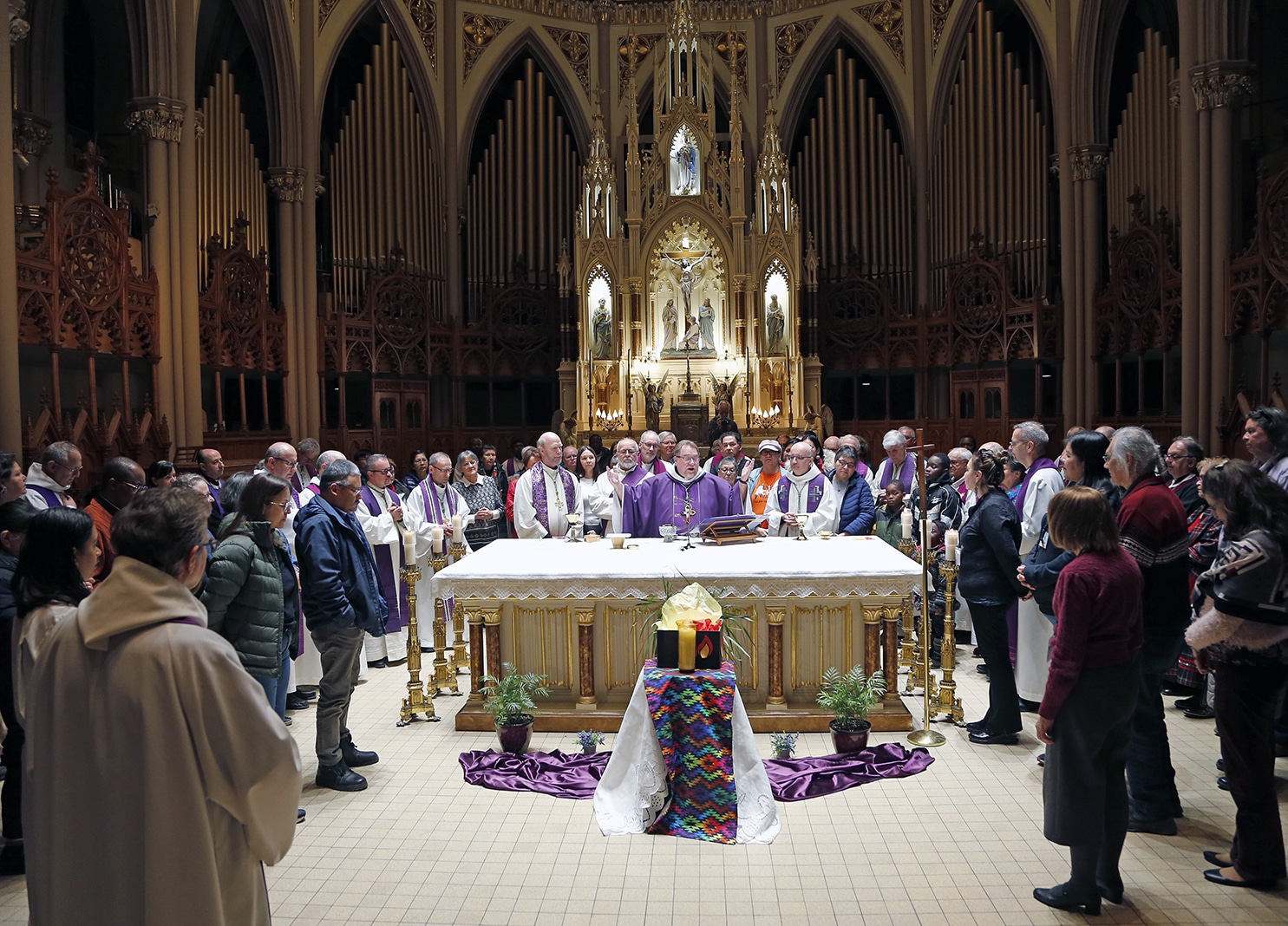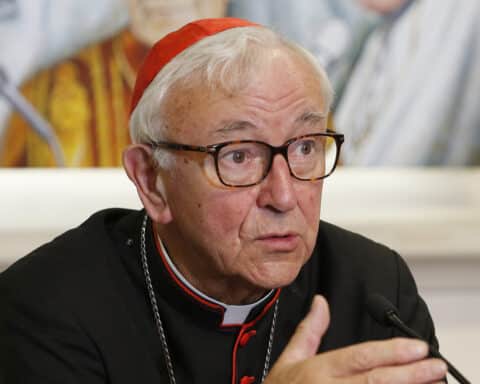(OSV News) — On March 5 and 6, 150 people, including nearly 75 Indigenous people, gathered in the Diocese of Trois-Rivières at the invitation of the organization Mission Chez Nous, which marks its 30th anniversary this year, to celebrate, take stock of the pastoral presence in Indigenous environments and reflect on its perspectives.
“Kwaì.” “Kuei Kuei.” “Pégwamugsin.” “Wliwni.” “Migwetch.” “Mikwetc.” “Tshinashkumitin.”
These different ways of saying “hello” and “thank you” in certain Indigenous languages were expressed at the opening of the event to highlight the strong delegation of First Nations in the room where the gathering was held, according to Présence, a French-language news agency in Quebec, which attended the event.
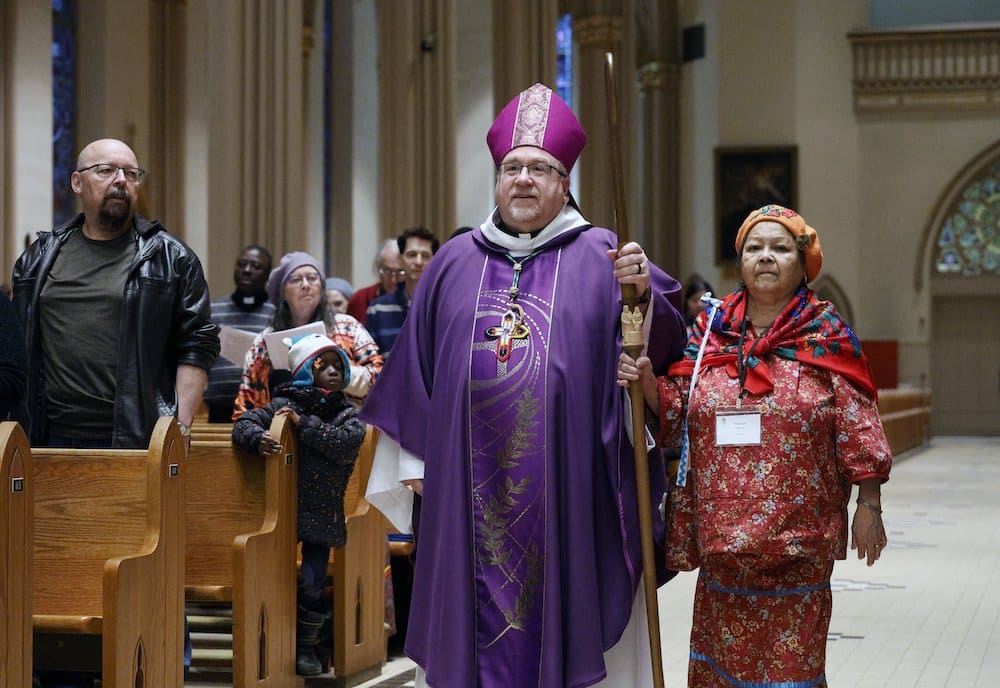
“We have people who come from Kuujjuaq, from Pakuashipi, from all over the territory. Here they have the opportunity to meet each other. Same thing for pastoral workers, of whom there are not many. They experience unique things. It’s important that they can exchange ideas with each other,” said Mathieu Lavigne, director of Mission Chez Nous.
According to Lavigne, who has led the organization since 2020, the primary goal of this large gathering was “to reflect together on the future of the pastoral presence in an Indigenous environment. A presence that is nonetheless fragile. To think about this future and, concretely, co-create it.”
“Co-creation is the key word,” Lavigne said in an interview with Présence. “This future can only be co-created, otherwise there will be none! In other words, it is about doing Church differently. It’s about doing Church the Innu way, the Atikamekw way, the Abenaki way.”
Indigenization of the Church
This conviction also was shared by Michel Andraos, dean of the Faculty of Theology at St. Paul University in Ottawa, Ontario.
During his presentation, Andraos explained that several dioceses around the world have undertaken “transformations in order to promote the indigenization of the Church. Aboriginal people are now at the center of the local Church. Here, there is still a lot of work to get there. However, there are theologians who are currently working on it.”
The efforts reflect a direction that St. John Paul II indicated during a papal visit to Canada in 1984, in which he both condemned colonialism as incompatible with the Gospel, and stated that “through her action, the Church desires to assist all people ‘to bring forth from their own living tradition original expressions of Christian life, celebration and thought.'”
“Christ, in the members of his body, is himself Indian,” St. John Paul said. “And the revival of Indian culture will be a revival of those true values which they have inherited and which are purified and ennobled by the revelation of Jesus Christ.”
Andraos gave the example of the late Bishop Samuel Ruiz Garcia (1924-2011), who served as bishop of the San Cristóbal de Las Casas Diocese in Chiapas, Mexico. Over a period of 40 years, indigenization — the process of expressing the faith through Indigenous culture — profoundly changed relations between Indigenous people and the local Catholic Church.
Andraos emphasized that the bishop claimed to have experienced a profound conversion through working with Indigenous peoples. “The bishop often said: ‘The Indigenous peoples evangelized me,'” he recalled.
Decolonization
For theologian Jean-François Roussel of the Institute of Religious Studies at the University of Montreal, this is a good example to follow.
“For me, it is something that could serve as an inspiration for the bishops here,” he told Présence.
Roussel emphasized that Bishop Ruiz’s work was about decolonization.
“Decolonization is an issue of power. This brings us back to the structures of the Church. This brings us back to the exercise of power in the Church,” he said. “This brings us to the development of Indigenous ministries. Perhaps even to the development of Indigenous structures in the Catholic Church.”
Tom Dearhouse, a member of the Kanien’kehà:ka (Mohawk nation) from Kahnawake (near Montreal) and the St. Francis Xavier Mission (where St. Kateri Tekakwitha‘s relics are entombed) also shared this vision.
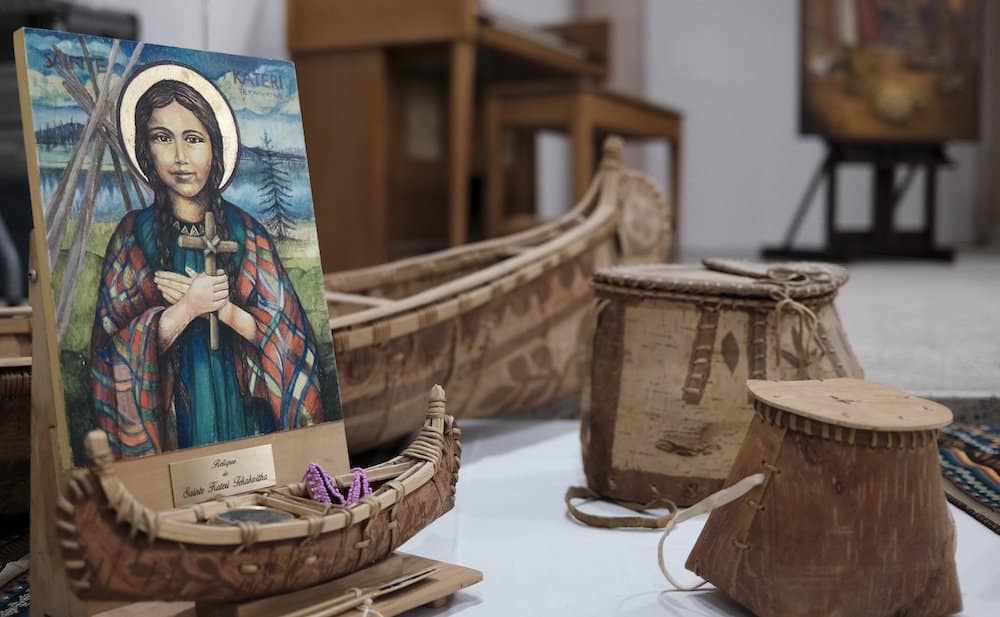
“We need to hear more Indigenous voices, reflections, homilies (and) comments on rituals. Aboriginal people must be able to carry out ministry for their own people,” he said. “This is an emerging trend in Ontario. It is important to bring out Indigenous voices, so that laypeople can take their place in ministry to their community.”
Originally founded by 17th-century Haudenosaunee Catholics, and served by Jesuit priests, Kahnawake’s early history featured some efforts to give the church unique Indigenous features, some of which included having an elected head teacher of the faith — who would lead prayers and even preach at Mass — a special form of the rosary; using Indigenous concepts to explain Catholic faith; and singing the parts of the Latin Mass in their own language. In this Indigenous context, the early church at Kahnawake produced not only St. Kateri, but Haudenosaunee martyrs, other heroes of faith and laypeople who shared the Gospel with other Indigenous peoples across Canada and the northern U.S.
Committed laity
Although the Catholic Church in Quebec seems to be falling behind in this area, there are initiatives that should nevertheless be highlighted. Deacon Alain Riendeau, who with his wife, Michèle Dufresne, is involved with members of the community of Wemotaci, located about 70 miles northwest of La Tuque, Quebec, in the Diocese of Trois-Rivières.
Deacon Riendeau exercises his ministry one weekend per month.
“The church is open. If people want to come and talk, I provide support,” he said. However, despite his offers of rituals and talking circles, he and his wife often find themselves in the company of only a few people.
Faced with this observation, he believes that a way of doing church within Indigenous communities is dying.
“I could say that I am here in Wemotaci to accompany a Church in palliative care. I think she will die soon,” he said. “There will be other things that will be reborn.”
During the gathering, participants had the opportunity to hear the testimony of two laypeople, Marilyne Roy and Sébastien Lafontaine, who accompany Indigenous communities with their respective spouses as well as their children.
Roy, a mother and theology graduate, has worked at the Mission Notre-Dame-de-Fatima in Kuujjuaq, Quebec, since 2017. She is accompanied by her husband, Jonathan Blais, a high school teacher. Her daily involvement with the mission has provoked a reflection that echoed those of several theologians and pastoral workers.
Before the bishops present, Roy pleaded for a new form of living Church to take shape.
“I dream that the ecclesial structure changes shape. How can we integrate other cultures when our structural model is of the order of a monoculture?” she said. “That’s a big question. I think we have to ask ourselves this question.”
For his part, Lafontaine, with his wife and their five children, has had meaningful experiences with the Anishinaabe community. During his short speech, he underlined the importance for non-Native Catholics who are involved with Indigenous people to know how to show their vulnerability and their own questioning.
“When they see the love we have for one another, they see that we are the disciples of Jesus,” he said.
Reconciliation in friendship
Monique Papatie, an Anishinaabe elder — “Mother Teresa of Kitcisakik” as she is nicknamed in her community — recounted the close bond she developed with Sister Renelle Lasalle. A member of the Sisters of the Sacred Hearts of Jesus and Mary, Sister Renelle worked for more than 12 years with the Anishinaabe communities of Kitcisakik and Lac-Simon, Quebec.
“She became my great friend, despite being a sister!” said the elder, triggering laughter in the room.
Also a residential school survivor, Papatie testified before the federal government’s Truth and Reconciliation Commission during a hearing held in Val-d’Or, Quebec. Sister Renelle was at her side.
She shared how Sister Renelle accompanied her on her path of forgiveness.
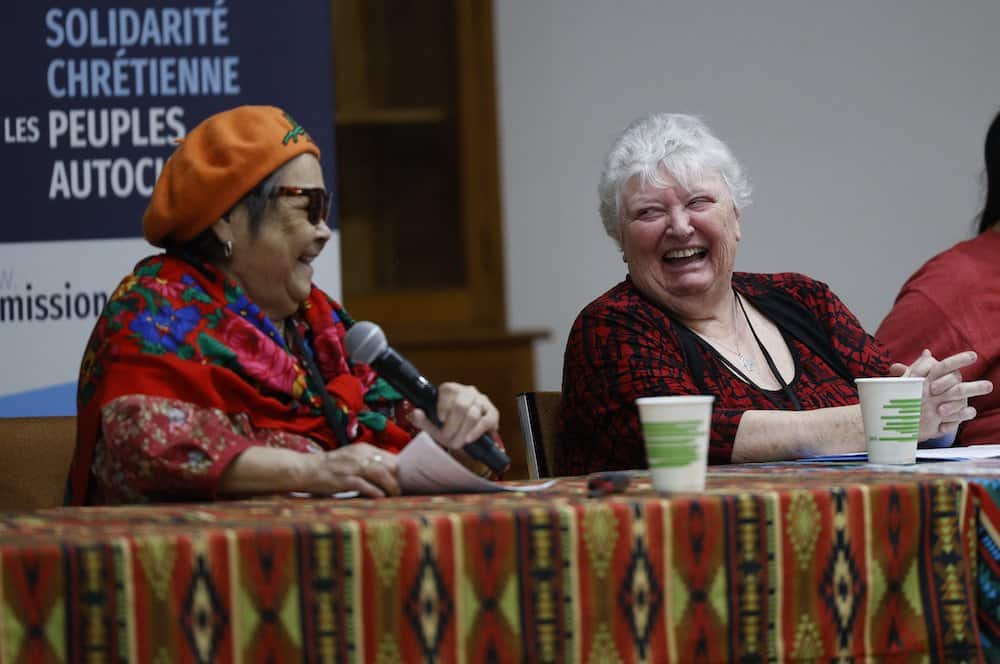
“She came to the forest with me. She helped me prepare for first Communions, weddings, baptisms. She ate our food. She scraped and prepared the beaver skins,” Papatie said. “All of this helped me to forgive.”
Throughout this gathering, the heavy legacy of abuse and residential schools hung over the participants. Disturbing and moving stories were heard.
What Jeffrey Papatie — a victim of a priest at 13 years old — said shocked the participants during the opening evening. A big man, Anishinaabe from Lac-Simon and dressed in his traditional dancer’s clothes, Papatie dared to reveal his vulnerability and affirm that it became his strength thanks to his spirituality. Having experienced violence, drugs and alcohol, he testified to his life of prayer and his trust in Jesus, Mary and Joseph. He told the story of his reconciliation with bishops and priests, recounting how his father encouraged him not to put them all in the same group.
In a gesture of great tenderness, Papatie then invited the bishops present to come and give him “a hug” by way of reconciliation. Montreal Archbishop Christian Lépine and Father Steve Lemay, vicar general of the Archdiocese of Sherbrooke, Quebec, took the stage to hug Papatie in the Anishinaabe way, heart to heart.
The gathering ended with a Eucharistic celebration presided by Bishop Martin Laliberté of Trois-Rivières, in the cathedral. Gestures of reconciliation punctuated the celebration. Laurette Grégoire, an Innu, commented on the Gospel while representatives of eight Indigenous nations read the universal prayers in their respective languages.
For the final gesture, the more than 150 people present surrounded the nave, then moved forward, greeting each other in turn, like an Anishinaabe friendship circle.
Yves Casgrain is a staff writer for Présence in Montreal. This article was originally published in French by Présence and is translated with permission for OSV News. OSV News staff contributed to the English version of this report.

